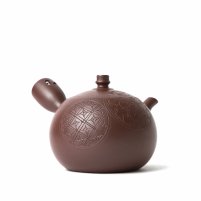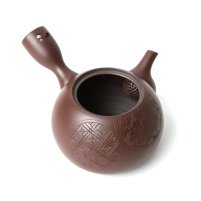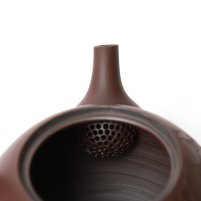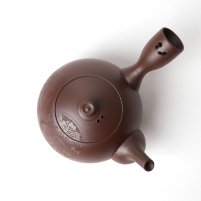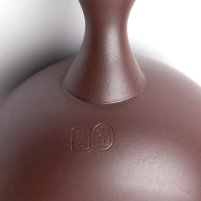Shidei banko will quickly develop a patina and become more glossy with use. It is natural that fingerprints will stand out on the surface in the first few months but these will begin to subside as the surface starts to develop a deep lustre – watch as the kyusu transforms in your hands! When cleaning, only use water and a soft cloth, then leave to air dry naturally. Do not use detergents or put in the dishwasher. Hard water may cause limescale deposits to develop, in which case rinse with soft bottled water, then wipe with a soft cloth.
Banko Kyusu
Marugata Sakura 丸型桜
SKU
5591
Yoshi En has recently grown out of Sunday Natural to become an independent premium tea store. As part of this transition, some products may still be shipped in Sunday Natural packaging.
A perfectly round kyusu decorated with a carved sakura design by celebrated Banko-yaki artisan Ito Jitsuzan. The handle features the Certified Traditional Craftsman's trademark openwork gourds, which symbolise good luck, health and prosperity. Suitable for brewing three small cups of fine green tea.
| Type | Side-handle Banko-yaki kyusu |
| Origin | Yokkaichi, Mie Prefecture, Japan |
| Maker | Jitsuzan |
| Volume | 300ml |
| Dimensions | Ø9.5 x 7cm |
| Weight | 185g |
| Material | Ceramic |
| Decoration | Sakura carving, openwork |
| Finish | Unglazed (yakishime) |
| Manufacture | Potter's wheel (rokuro) |
| Strainer | Ceramic (debeso) |
| Artist's Stamp | Beneath handle, openwork gourds |
| Packaging | Signed wooden box (kiribako) |
In stock








